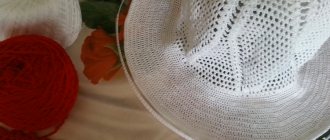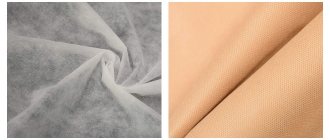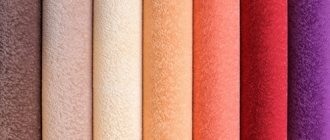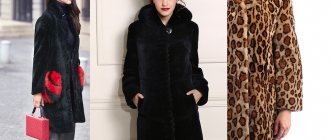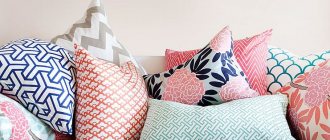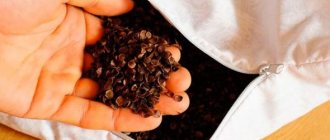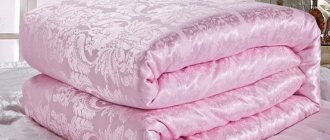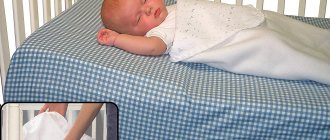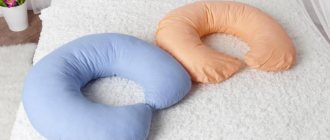Content:
- Covering material spunbond white 60 G/M² width 3.2 M
- Spunbond SUF 30 3.2m*10m Set Agro
- Covering material / spunbond Agrotex triple protection waterproof reinforced
- Covering material / spunbond Agrotex double protection white reinforced
- Spunbond No. 60 in a roll (white, covering for the winter)
- Spunbond SUF 30 white, size 4.2m x 10m
- Covering material spunbond 30 G/M 3.2X10 M
- Covering material spunbond 60g sq. m. 3, 2mx10m
- Covering material spunbond 10x3.2m, 60 g/m SUF black
- Spunbond SUF 17 (3.2x10 m) Set-AGRO KA1544
- Spunbond or film: which is better for a greenhouse?
Photo: https://teplica-spb.ru/
Application in growing various crops
Nonwoven materials of different densities are used for different types of crops grown:
- The first spring greens are covered with light material 17–30 g/sq.m. m;
- to cover early tomatoes, cucumbers and zucchini, a tunnel greenhouse is built using medium-density non-woven fabric;
- It is recommended to cover the soil in which strawberries will be planted with black agrofibre with a density of 42 g/m2. m - it will serve as mulch;
- For crops that grow all season in closed ground, dense reinforced fiber is used.
Experienced gardeners note that there is no significant difference between covering materials of the Spunbond, Lutrasil and Agrospan brands. All of them meet the quality standards of polypropylene covering materials.
Covering material spunbond white 60 G/M² width 3.2 M
Photo: beru.ru
A very durable and fairly dense material for covering greenhouses and greenhouse frames. Maintains humidity and comfortable temperature in the greenhouse even in frosts down to –9C°. Transmits light and water. Dense, air-permeable material protects plants from gusty winds, hail, rain, and withstands dense snow cover. In winter, it is indispensable for protecting trees and shrubs from freezing. It is possible to stitch the fabric overlapping with nylon threads.
Covering material spunbond white 60 G/M² width 3.2 M
Advantages
- increase in productivity
- reduction in crop ripening time
- winter protection
- allows water and air to pass through
- transmits light
- work for more than one season
- weed control
Reviews from summer residents
I want to warn gardeners against making mistakes. I bought black non-woven material so that the air in the greenhouse would not become waterlogged. I thought it was a great success, because we rarely have it on sale. I spread it out as indicated in the instructions, made slits for the seedlings, but it turned out that the material allowed moisture to pass through. The greenhouse was not ventilated, so dampness developed and the seedlings became sick. Now I will use all new products carefully.
Tamara Ivanovna, Omsk
In the summer we always use Lutrasil and Acrylic, or Ogril, I don’t know exactly what they call it, my husband buys everything. In winter for roses - Obernite. Our neighbor leaves reinforced film on the greenhouse for the winter and says that it is durable and does not deteriorate. This year we also decided to do the same, and the result was a lot of snow, and our covering material was torn. It's a shame, but now we'll be smarter.
Valentina Galichenko, Torez
We have been using spunbond at our dacha for 4 years now.
We cover the strawberries and vegetable beds after sowing, then the plants lift the canvas with their leaves. We take pictures when the weather gets warm. It is very convenient: the soil under the agrofibre breathes, but does not dry out, and there is no need to mulch. The downside: when it rains, you need to cover the beds with film, because the spunbond gets wet and becomes heavy, and all the water seeps through it. Svetlana, Balakhna
Spunbond SUF 30 3.2m*10m Set Agro
Photo: beru.ru
Spunbond SUF is a non-woven covering material used in various types of agricultural work. It is used as a covering agrofibre for seedlings, young shoots and fruit-bearing plants in open areas, as well as in greenhouses. Thanks to its composition, which includes special ultraviolet stabilizers (SUV), it perfectly protects plants from the harmful effects of sunlight. The price of spunbond is significantly lower than that of other materials used in crop production, which makes its purchase profitable.
Spunbond SUF 30 3.2m*10m Set Agro
Advantages:
- does not require the installation of frames (the material can be laid directly on the plants)
- through watering (there is no need to remove agrofibre to water plants)
- retains heat well
- evaporates moisture well, preventing the occurrence of plant diseases
- It is possible to adjust the height and width of the spunbond as the plants grow
Spunbond care
Spunbond can last for many years if used correctly. So if the item made from it is valuable or it is planned to be reused on the site, you must follow certain care rules.
- It may not withstand washing in a washing machine.
- If necessary, you can wash only by hand, without using soap or other detergents.
- To dry clean, simply vacuum it or wipe it with a damp cloth.
- To straighten the material, it can be hung or steamed.
- The spunbond sticks to the iron - it cannot be ironed.
If a spunbond product is disposable, then it does not require special care. Such things are made from low-strength raw materials that will not withstand washing or similar events. So the rules described above apply only to reusable clothing, garden rolls and similar products.
Spunbond, also known as agrotextile or agrofibre, which is a non-woven polypropylene fabric, appeared on the Russian market about 15 years ago and every year it becomes more and more popular among gardeners and gardeners. This material is represented by a fairly large number of brands: Agrotex, Agrospan, Lumitex, Agril, AgroSUF, Lutrasil. The names are different, but the essence is the same. The first thing people pay attention to when choosing an agricultural material is its density; the nuances of application directly depend on this indicator.
Covering material / spunbond Agrotex triple protection waterproof reinforced
Photo: beru.ru
The laminating layer makes the material waterproof. A layer of non-woven material eliminates the lens effect and condensation on the inside. The reinforcing layer significantly increases the strength of the material, allowing it to be used for several seasons.
Covering material / spunbond Agrotex triple protection waterproof reinforced
Advantages:
- waterproof
- reinforced
- lasting
- non-woven
- no lens effect
- does not form condensation
Covering material / spunbond Agrotex double protection white reinforced
Photo: beru.ru
The presence of a reinforcing layer significantly increases the strength of the material, allowing it to be used for several seasons. It has two layers that protect plantings from spring frosts and sudden temperature changes. The material allows water to pass through and breathes.
Covering material / spunbond Agrotex double protection white reinforced
Advantages:
- reinforcing layer
- high strength
- two layers
- allows water to pass through
- breathes
- protects against frost
Types of polyethylene film
There are several types of polyethylene film. In some cases, it is economically feasible to use this material rather than agrofibre. The film can last longer, and in some respects it is superior to non-woven materials. In addition to regular polyethylene film, there are also improved varieties.
Reinforced polyethylene
This film is made by combining two or three layers with a reinforcing mesh placed between them. Some models are distinguished by the addition of UV stabilizers that prevent the destruction of polyethylene by sunlight.
Scope of application of reinforced polyethylene:
- for unheated greenhouses;
- for heated greenhouses;
- for greenhouses of different heights.
The strength of reinforced polyethylene film is such that the material can easily withstand hail and strong winds. In the southern latitudes of the country, the film lasts for 3 years, in the conditions of central Russia and further north - up to 5 years.
You can extend the life of this covering material if you remove it for the winter and put it away for storage.
Film with light stabilizer
Light-stabilized polyethylene is used in greenhouses located in regions with a lot of sunny days. This material is obtained by adding special additives that increase resistance to ultraviolet radiation.
Dyes can be added to light-stabilized polyethylene. Thus, orange film is used on farms to accelerate fruiting - it provides the necessary spectrum of light to plants.
Double layer film
This covering material has two layers of different colors - black and white. It is used exclusively for mulching beds, for which the film is laid with the black side down.
A two-layer film prevents the soil from overheating, but does not allow it to be properly moistened and does not allow air to pass through. Therefore, its scope of application is limited.
Spunbond No. 60 in a roll (white, covering for the winter)
Photo: beru.ru
Spunbond No. 60 with the addition of ultraviolet stabilizers (SUV). It is used in agriculture to shelter plants from frost and to shade them during the hot season. And since the price of this product is more than affordable, spunbond 60 SUF is also used to create greenhouses and to cover greenhouses.
Spunbond No. 60 in a roll (white, covering for the winter)
Advantages
- increase in productivity
- reduction in crop ripening time
- winter protection
- allows water and air to pass through
- transmits light
- work for more than one season
- weed control
Spunbond SUF 30 white, size 4.2m x 10m
Photo: beru.ru
It is used to solve a whole range of problems - covering beds and fresh lawn crops to prevent negative influence from the outside. Used to protect plants from the scorching sun, pests (insects, birds, animals, some neighbors), and excessive rainfall. So if you buy this material, it will certainly create a healthy microclimate in the greenhouse and increase the growing season of plants.
Spunbond SUF 30 white, size 4.2m x 10m
Advantages
- increase in productivity
- reduction in crop ripening time
- winter protection
- allows water and air to pass through
- transmits light
- work for more than one season
- weed control
Main types of spunbond
Manufacturers produce several varieties of polypropylene synthetic materials; they differ depending on the conditions of use. Such fabrics have a different composition; dyes and other additional substances can be added to it. The following types of spunbond can be named:
- Agrotextiles. This is the most common type of spunbond used for various purposes in agriculture. Its special feature is the treatment with photostabilizers that increase resistance to ultraviolet rays. Black spunbond is used for mulching beds and flower beds: moisture is retained under the canvas and the temperature rises, as a result of which the rotting of organic residues is accelerated. White material is used to protect from sunlight.
- Colored spunbond. The material contains pigments to improve decorative qualities; it is used for the manufacture of bags and other household products. Durable fiber can withstand heavy loads, so products made from it are in demand.
- Laminated spunbond based on polypropylene. It is an air- and waterproof material with one smooth side and is used for medical purposes.
The main popular variety is spunbond SUF - agrotextiles protected from ultraviolet radiation. Stabilizers in the composition make it a durable and practical covering material.
Possibility of using spunbond in agriculture
Non-woven covering material has become widespread when installing greenhouses and greenhouses, since in many respects it is more profitable than traditional film. Agrofibre is used to cover the frames of beds and greenhouses, protecting plantings from the cold, but at the same time allowing the plants to breathe. In agriculture, this material is used in several ways:
- Warming up the beds before early spring planting. The covering material allows you to get the first shoots earlier and significantly accelerate the heating of the soil by the sun's rays.
- Protection of seedlings from low temperatures at night and late frosts. Covering the beds prevents damage to young crops during a sudden cold snap.
- Protection of seeds and shoots from rodents and birds. Spunbond successfully helps fight garden pests.
- Retention of moisture in the soil. The material prevents the soil from drying out quickly, and it also protects the fertile soil layer from weathering. Spunbond is used on farms to combat soil erosion.
- Protection from downpours and hail. The material is highly durable and reliably protects plants from any weather conditions.
- Creating comfortable conditions for plants in greenhouses and greenhouses. Since the material allows water vapor to pass through, condensation does not form underneath it, and plants do not suffer from excess humidity.
The use of spunbond in agricultural technology increases soil productivity and prevents damage to cultivated plants due to various natural factors. This is a durable material, it can be used for many seasons, and it fully retains its properties. Agrofibre is used to prevent plant diseases from gray rot: it is used on strawberry, raspberry and blackberry plantations to prevent contact of berries with wet soil.
How to choose spunbond? Main settings
In agriculture, three main types of spunbond are used: it can be black, white and foil. An additional foil layer reflects the sun's rays, providing plants with reliable protection from overheating. Black spunbond inhibits plants, so it is used to create a mulch layer and prepare for planting. White spunbond provides cultivated plants with comfortable conditions for development and fruiting.
One of the most important parameters when choosing spunbond is density; the ability to transmit sunlight depends on it. In agriculture, the following material density options are used:
- 17 g/m2. This is the lightest material and is used to protect plantings from wind and rainfall. It transmits sunlight well and does not interfere with the growth of shoots.
- 30 g/m2. A denser type of spunbond is used as a covering material to prevent damage to the roots during late frosts. In summer, such material can be used for protection against hail as a temporary shelter.
- 42 g/m2. This variety is used for closed beds and greenhouses with arcs. The material provides good illumination for plantings and protects them from wind and other natural influences.
- 60 g/m2 or more. The densest type of spunbond is used to protect green spaces from freezing in winter, as well as from strong winds, snow, and hail. This material is in demand in areas with cold climates; it allows you to extend the growing season of plants.
Spunbond is produced by Russian and foreign manufacturers; polypropylene-based agrofabric is in demand throughout Russia. Russian products are cheaper, but Western analogues are characterized by greater strength and durability.
offers to purchase spunbond covering material from Russian and foreign brands; a wide range of products for agriculture is on sale. Call us and get detailed advice on choosing agrotextiles; we offer affordable prices and favorable terms for delivery of products.
Covering material spunbond 30 G/M 3.2X10 M
Photo: beru.ru
The material is intended for covering plants using arcs. Does not form condensation, transmits light well. Agrotex white density 30 g per square meter. Still wondering which is the best spunbond for a greenhouse? Please pay attention to this product.
Covering material spunbond 30 G/M 3.2X10 m
Advantages
- increase in productivity
- reduction in crop ripening time
- winter protection
- allows water and air to pass through
- transmits light
- work for more than one season
- weed control
Covering material spunbond 60g sq. m. 3, 2mx10m
Photo: beru.ru
A covering sheet measuring 3.2x10 m is packed in a transparent plastic bag with an insert containing information about the product and its use. Purpose: for frame greenhouses. Composition: 100% polypropylene with UV stabilizer, white color. Service life – 3 seasons.
Covering material spunbond 60g sq. m. 3, 2mx10m
Advantages
- increase in productivity
- reduction in crop ripening time
- winter protection
- allows water and air to pass through
- transmits light
- work for more than one season
- weed control
Cellular polycarbonate
It is advisable to build medium- and large-area greenhouses from polycarbonate. It lasts up to 10 years or longer, withstands wind and snow loads, is not damaged by hail and does not deteriorate due to temperature changes. Plastic is inert; microbes and fungal spores do not multiply on it. Other advantages of the material:
- good light transmittance;
- no odor;
- ease;
- plastic;
- heat resistance.
If the material is heated, it can be bent to give the desired shape, but even with a strong increase in temperature, it does not spread combustion, but only melts. The structure of polycarbonate is formed by many small cells - honeycombs, thanks to which low thermal conductivity is achieved. Light transmission is 92-93%. Sheets are available with or without the addition of a UV stabilizer; you need to pay attention to this when purchasing.
Covering material spunbond 10x3.2m, 60 g/m SUF black
Photo: beru.ru
Non-woven agrotextile material for soil mulching. Manufactured using the “spunbond” technology of the same name: molten polypropylene is drawn into thin threads, which are fastened together on a conveyor into a single web. The resulting material has excellent performance properties. The use of spunbond allows you to protect early plantings from frost. In addition, the material prevents the growth of weeds, making it easier to care for cultivated plants.
Covering material spunbond 10x3.2m, 60 g/m SUF black
Advantages:
- spunbond density - 60 g/m²
- canvas size - 3.2 × 10 m
- allows water and air to pass through well
- does not rot and does not release harmful substances into the soil
- has optimal thermal conductivity
- neutral to fertilizers
Characteristics and properties of the material
In stores and on the market you can find spunbond of different colors and densities. The use of spunbond most often depends on these indicators. But you need to take into account that in addition to this, the material may differ in other characteristics. Its properties and qualities directly depend on production. Below are the general qualities inherent in almost any type of spunbond.
- The raw materials are non-toxic and environmentally friendly. It consists of 100% synthetic materials, combined without glue or similar hazardous materials. Even when heated, high wind, it does not release dangerous toxins into the air, does not harm plants, people, bodies of water or animals.
- The density of this fabric ranges from 15-600 g/m².
- Durable and durable. Spunbond does not rot, does not “bloom”, and does not corrode.
- Does not conduct current and does not accumulate static electricity.
- Spunbond is valued for its lightness. It weighs little even when wet!
Spunbond, as it were, regulates the microclimate if, for example, it is used for a greenhouse
In addition, spunbond is an inexpensive and easy-to-use material. It is easy to cut, sew and glue. It does not tear as easily as oilcloth, and the edges do not fray like fabric.
Spunbond SUF 17 (3.2x10 m) Set-AGRO KA1544
Photo: beru.ru
Non-woven agrotextile material for soil mulching. Manufactured using the “spunbond” technology of the same name: molten polypropylene is drawn into thin threads, which are fastened together on a conveyor into a single web. The resulting material has excellent performance properties. The use of spunbond allows you to protect early plantings from frost. In addition, the material prevents the growth of weeds, making it easier to care for cultivated plants.
Spunbond SUF 17 (3.2x10 m) Set-AGRO KA1544
Advantages:
- non-woven material
- Width, m 3.2
- Length, m 10
- Density, g/m² 17
- White color
Shading nets
This material is not exactly covering material, but it is widely used by gardeners and gardeners, so it deserves attention.
The shading net performs the only function - it protects the plantings from the scorching rays of the sun. It can be placed on top of potatoes, cabbage, tomatoes, cucumbers, young seedlings, currant bushes, raspberries and gooseberries. In fact, the net is suitable for any plants. When working for a long time in a raspberry or other berry garden, the gardener himself can hide from the sun under the net.
The basis for the manufacture of shading fabric is polypropylene film. It contains a UV stabilizer, which achieves a scattering effect. White and green nets are produced, but upon request, manufacturers produce canvases of any colors. The length is not limited, the width is 3 m.
These are the main materials used to cover soil and plants in open and closed ground. What to choose is up to the gardener to decide, and he must take into account the purpose, service life and price, which differs significantly from different manufacturers.
Spunbond or film: which is better for a greenhouse?
Film is the cheapest material for greenhouses and greenhouses. The advantages of its use are due to the following characteristics:
- has windproof properties
- protects against excessive waterlogging during heavy rains
- helps warm the earth on sunny days
- transmits light well
- maintains humidity and warmth in the greenhouse
However, on sunny days, the temperature in the greenhouse can rise to +70... +80 °C, which leads to the death of plants. And after sunset, the space under the film quickly cools down. And if frosts are expected, then additional shelters will be required. On the other hand, without regular ventilation, a greenhouse effect is created in the greenhouse, while drops of condensation falling on the plants turn into a favorable environment for the development of pathogenic fungi. Therefore, a film greenhouse requires daily presence in the garden.
Photo: https://ekotec.com.ua/
As for spunbond, it is a non-woven polymer material that serves to protect against birds, insects, and temperature changes. Its advantages are as follows:
- partially permeable to air and moisture, ventilated
- retains moisture and heat in the garden
- not afraid of hail
- has less windage than film and withstands winds better
- does not electrify, which means it does not become dirty for a long time
- easy to use: it can be easily folded in several layers, can be washed, repaired (sewn up)
The material also has its disadvantages, these are:
- on hot days, the air underneath still warms up, but not as much as under the film - up to +50 °C.
- breaks on contact with sharp surfaces
- transmits light worse than film
- when the temperature changes, the inside becomes damp
- contact of the material with plants is undesirable
- service life is approximately the same as that of film
- Suitable for weekend gardening
Well, spunbond or film: what is better for a greenhouse and what material to cover your particular greenhouse with is up to you to decide. We have only provided you with all the necessary and useful information.
#Top 10
Read us first - add the site to your favorite sources.
Add a comment
{"commentics_url":"\/\/express-novosti.ru\/comments\/","page_id":1125365,"enabled_country":false,"enabled_state":false,"state_id":0,"enabled_upload": false,"maximum_upload_amount":3,"maximum_upload_size":5,"maximum_upload_total":5,"securimage":true,"securimage_url":"\/\/express-novosti.ru\/comments\/3rdparty\/securimage\ /securimage_show.php?namespace=cmtx_1125365″,”lang_error_file_num”:”\u041c\u0430\u043a\u0441\u0438\u043c\u0443\u043c %d \u0444\u0430\u0439\u043b\u043e\ u0432\u043c\u043e\ u0436\u0435\u0442 \u0431\u044b\u0442\u044c \u0437\u0430\u0433\u0440\u0443\u0436\u0435\u043d\u043e.","lang_error_file_size":"\u041f\u043e \u0436\u0430\u043b\ u0443\u0439\u0441\u0442\u0430, \u0437\u0430\u0433\u0440\u0443\u0437\u0438\u0442\u0435 \u0444\u0430\u0439\u043b \u0440\u0430\ u0437\u043c\u0435\u0440\u043e \u043c \u043d\u0435 \u0431\u043e\u043b\u0435\u0435 %d MB.","lang_error_file_total":"\u041e\u0431\u0449\u0438\u0439 \u0440\u0430\u0437\u043 c\u0435\u0440\ u0432\u0441\u0435\u0445 \u0444\u0430\u0439\u043b\u043e\u0432 \u0434\u043e\u043b\u0436\u0435\u043d \u0431\u044b\u0442\u044c \ u043d\u0435\u0431\u043e\u043b\ u0435\u0435 %d MB.","lang_error_file_type":"\u041c\u043e\u0436\u043d\u043e \u0437\u0430\u0433\u0440\u0443\u0436\u0430\u0442\u044c \u0442\u0 43e\u043b\u044c ""lang_text_loading":" u0437\u043a\u0430 ..","lang_placeholder_state":"\u0420\u0435\u0433\u0438\u043e\u043d","lang_text_country_first":"\u0421\u043d\u0430\u0447\u0430\u043b\u0430 \u0432\u044b\u04 31\u0435 \u0440\u0438\u0442\u0435 \u0441\u0442\u0440\u0430\u043d\u0443″,”lang_button_submit”:”\u0414\u043e\u0431\u0430\u0432\u0438\u0442\u04 4c","lang_button_preview":" \u041f\u0440\u0435\u0434\u0432\u0430\u0440\u0438\u0442\u0435\u043b\u044c\u043d\u044b\u0439 \u043f\u0440\u043e\u0441\u043c\u 043e\u0442\u0440″,”lang_button_remove ":"\u0423\u0434\u0430\u043b\u0438\u0442\u044c","lang_button_processing":"\u041f\u043e\u0434\u043e\u0436\u0434\u0438\u0442\u0435..."}
Choosing quality spunbond
Any high-quality agrofibre must contain special molten light stabilizers that protect the non-woven polymer material from premature destruction under the influence of ultraviolet radiation. Without these additives, the fabric quickly collapses. A good product always contains signs confirming the presence of ultraviolet stabilizers (UVS). Textiles that do not contain them disintegrate by the end of the first season.
The manufacturer must indicate the presence of SUF on the packaging
A genuine high-quality agricultural fabric has a uniform structure; there should be no gaps or compactions on the fabric. It is better to immediately refuse to purchase a dubious product, even if the price seems especially tempting.
It is not recommended to purchase agrofabrics from an unknown manufacturer in online stores when there is no possibility of a thorough visual inspection.
